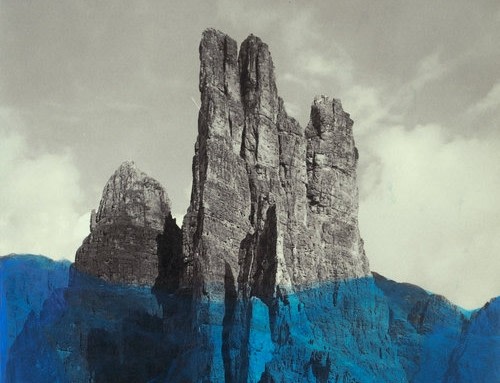
WASHINGTON, DC — In her solo exhibition at the Katzen Arts Center, artist Julie Wolfe attempts to confront a massive question: How do we find peaceful coexistence between our human systems and the natural world? Quest for a Third Paradise — which draws its name from Michelangelo Pistoletto’s concept that envisions harmony between nature and artifice — provides no firm answers. But it insists that the path to such a paradise requires an awareness of the variety of languages we have devised and can devise to organize and understand our surroundings.
The many, many works on view, curated by Claire D’Alba, show how Wolfe herself is trying to make sense of the natural world by gathering and categorizing all kinds of sights and objects through myriad visualizations that offer no scientific information but inspire search for meaning, like puzzles. Filling the entirety of the museum’s top floor, the exhibition is huge and wavering, comprising large-scale paintings; installations of found objects and small sculptures; many, many painted-over pages cut from books; and one video work. The unifying thread is Wolfe’s use of joyous color and simple geometries, deployed as her visual vocabulary to suggest how we ourselves may build and structure our relationship to the urban environment in conscientious, creative ways.
Wolfe deconstructs, rearranges, and literally paints over traditional means of information. She covers one wall with dozens of pages detached from history encyclopedias, each now covered in brightly painted symbols that could be innovative data visualizations of the now-illegible content printed decades ago. Below it, she’s created a large color wheel out of found books ordered not by their very specific subjects (flower arranging, the Classical world, American Kennel Club dogs) but by color. She eschews familiar systems once more in her series of gouache, enamel, and ink on paper works, In a Day Flight. These reimagine researchers’ carefully determined flight patterns of planes and birds in schematic drawings where arrows and lines connect in cryptic, biomorphic forms. Wolfe’s tiny notes and diagrammatic labels egg you to figure out what kind of message these hold, but they are her personal recordings of her observations, understood by their maker alone.
Wolfe best highlights the influence of our own perspectives in her diptych “The Color of Pigeons” (2016), which is informed by the Lüscher Color Test — developed to suggest that how people respond to colors determines their psychological state. It presents eye-popping grids of different colors, each labelled with adjectives like “superhuman,” “brand-new,” “delicate,” and “negligent.” Uprooting the informative design of a color swatch and absurdly repurposed (pigeons, of course, come in only so many colors), it celebrates the fact that individuals do have unique visions; situated in this exhibition, the paintings prompt the question of how we may collectively negotiate our different views to promote a society that functions within the broader complexities of the natural world.
In other installations, Wolfe reminds of what’s at stake if we don’t work together towards this peaceful coexistence. A cart outfitted with magnifying glasses invites us to get close to precious gems that gleam and mesmerize, although they are already displaced and sanitized. “Green Room 2” (2016) is a live laboratory of glass bottles containing over 200 water samples Wolfe collected from waterways across the country over five years. While the samples are dyed and arranged so the display forms enticing rainbow-hued shelves, the vessels hold wilting plant samples, industrial chemicals, and even objects, from lightbulbs to wires. They are examples of ecological imbalance that will decay over the exhibition’s run — sending a message about our urban environments that needs no particular language for us to understand it.